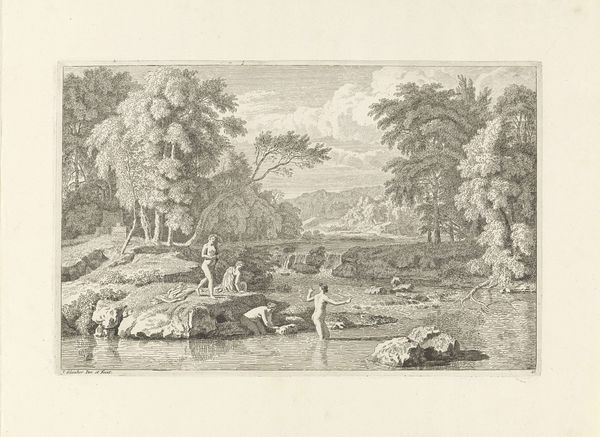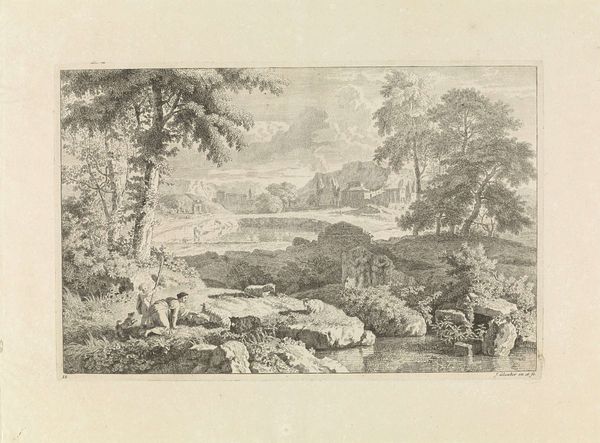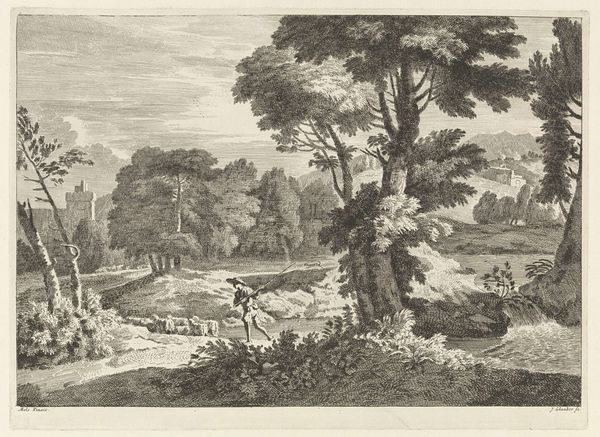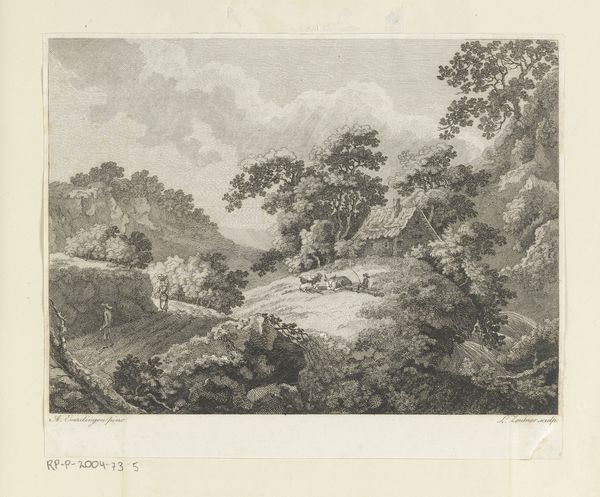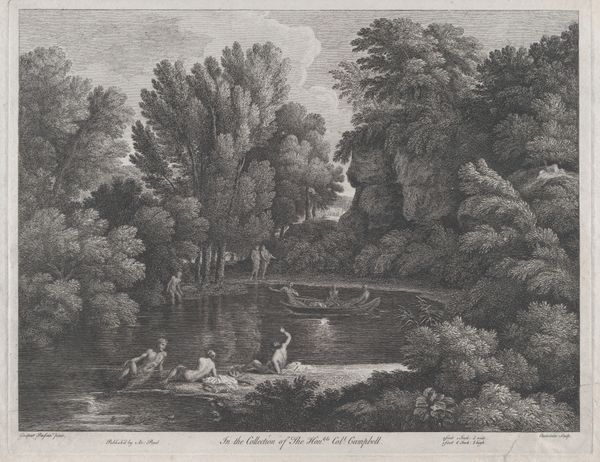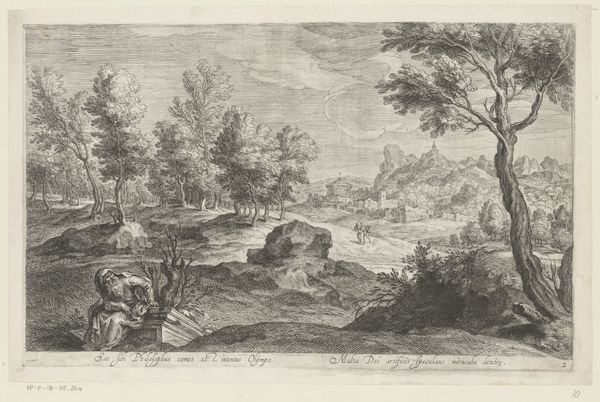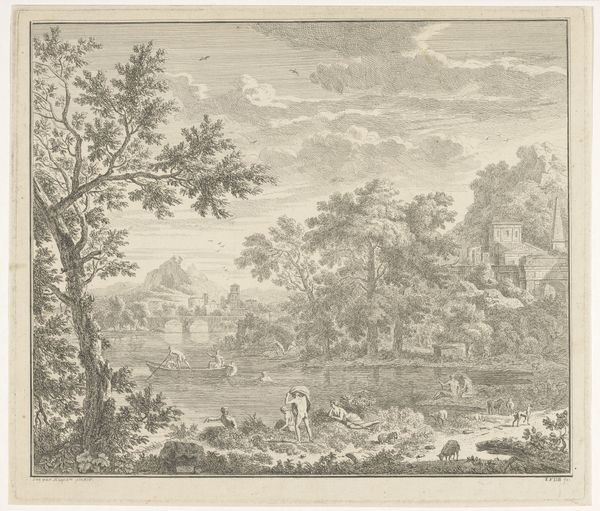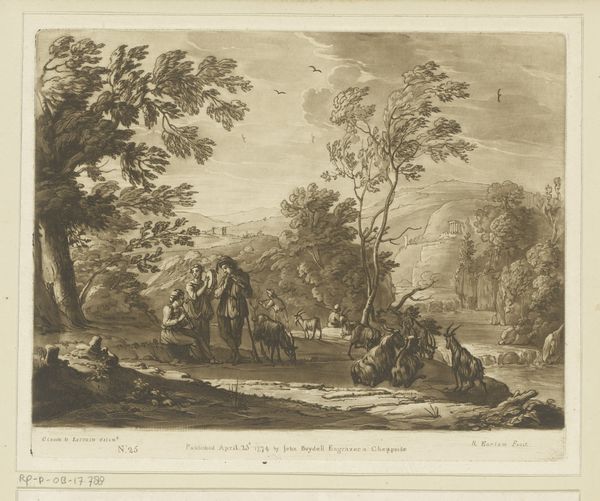
etching
#
baroque
#
etching
#
landscape
#
history-painting
#
realism
Dimensions: width 362 mm, height 240 mm
Copyright: Rijks Museum: Open Domain
Johannes Glauber made this landscape etching sometime between the mid-17th and early 18th century. It depicts an idealized landscape, a popular genre in Dutch art, often infused with classical motifs. Looking closely, we see figures and architectural ruins which are visual codes referencing classical antiquity. The scene echoes Arcadia, a mythical place of pastoral beauty and harmony that was written about by classical authors such as Virgil. But this is Arcadia disrupted; a storm rages, trees bend violently in the wind, and a man rushes through the landscape seemingly trying to escape the tempest. Glauber was working at a time when the Dutch art market was dominated by genre painting and portraiture, and landscapes provided an escape from the mundane realities of everyday life. Yet here, the social harmony is destabilized. To understand this fully, we would need to delve further into the intellectual and cultural history of the time. What anxieties was Glauber responding to? Was he critiquing the utopian ideal of Arcadia, or reflecting on some contemporary calamity?
Comments
No comments
Be the first to comment and join the conversation on the ultimate creative platform.
